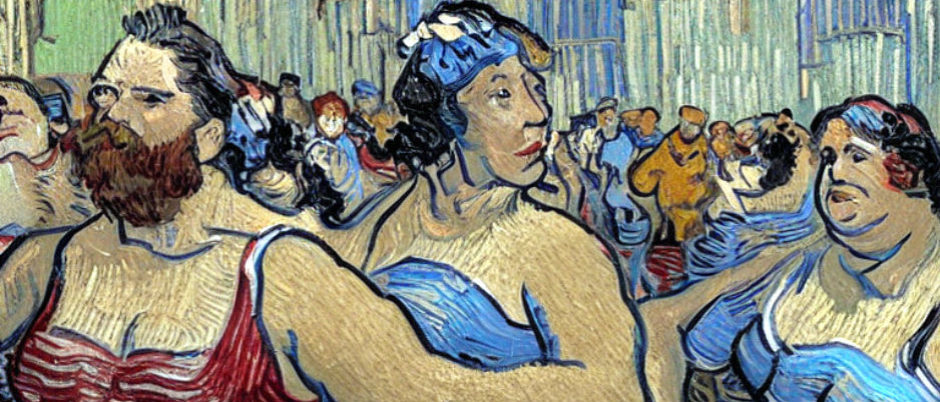In recent years, many neo-hippies have made the switch to metal straws and reusable drinking bottles as a supposedly Eco-friendly alternative to throwaway plastic straws and bottles. However, what many don’t know is that using these straws and bottles come with many hidden dangers. This article will explore why these devices may be bad for you, and are usually nothing but environmental window-dressing. Let’s face it, reusables are bad.

Metal Straws Can Blind You:
Metal straws can become a serious hazard to your eyesight. Reports of injuries from metal straws have been on the rise, with many accidents leading to blindness. When using metal straws, it’s easy to accidentally poke yourself in the eye. Additionally, if you trip or fall while holding a metal straw, the sharp edge can easily penetrate your eye (or your heart), causing permanent damage.
Metal Straws and Reusable Drinking Bottles Can Harbor Bacteria:
Reusable straws and bottles present two major concerns: bacteria and mold growth and chemical leaching. Bacteria and mold can easily grow in warm, moist environments, and reusables are no exception. If not cleaned properly, these straws and bottles can quickly become a breeding ground for harmful microorganisms that can cause infections and allergies. Chemical leaching is another issue with reusables, as chemicals such as BPA or phthalates can leach into the water over time, posing potential health risks such as hormonal imbalances and cancer risk.
This can result in the spread of infections or illnesses between users, or even cause the same user to develop an ongoing intestinal problem with a cause that’s hard to figure out. Ever taken a sniff of your reusable bottle? What’s that smell? It’s bacteria, and there’s an awful lot there. If you could see bacteria, you would instantly quit using these containers
Metal Straws and Reusable Bottles Require Lots of Energy to Wash Them:
These straws and bottles actually require a lot of energy to clean. The only way to properly clean them is to force boiling water through them. Who ever does that, and what does the energy to produce boiling water cost? While reusable materials are supposedly more environmentally friendly, the energy required to clean metal straws and drinking bottles is not worth the benefit.
Metal Straws and Reusable Bottles Are Hardly Ever Washed Properly:
Most people just don’t wash their straws and bottles at all. Running tap water through them every couple of weeks is not considered to be proper washing. The nastiness factor can reach high levels over just a day or two. Add to this the process of transferring fecal bacteria with your hands from the bathroom to the straw or bottle. It’s disgusting. Reusables are bad. The truth is that reusable straws and bottles are not as sustainable or healthy as many consumers think.
Alternatives:
It’s clear that metal straws pose several risks. Thankfully, there are some alternatives on the market. Glass straws don’t require as much energy to clean. Bamboo straws, while less durable, are an affordable alternative to metal or plastic, and the supposed Eco-friendly bamboo has a strong appeal to hippies. However, both of them can easily put your eye out, and if you walk around holding a sharp-pointed straw made of stiff, hard material near your eye, it’s a sure sign that you have absolutely no common sense.
Getting Rid of Plastic Straws and Bottles:
The best thing to do is to opt for plastic straws and throwaway plastic bottles. Send this stuff to a landfill immediately when you are done with it. Do not try to incinerate it or do anything else to it, other than bury it. A landfill made of plastic waste is completely harmless, and ski resorts or thrilling amusement parks can be built on top of the old landfill when it’s full.
The supposed lack of landfill space has been extremely overblown. To date, the world has produced 9.8 billion tons of plastic since 1950, when plastic use became more common. Let’s assume that all this plastic has been thrown in the trash. Imagine that we are going to send every piece of plastic EVER made to a landfill. This amount of plastic would fill a hole about 75 feet deep that is the size of London. Note that this landfill is for ALL the plastic waste ever produced. Since London is a tiny area when you consider the size of the Earth’s surface, you can see that this supposed lack of landfill space has been very seriously overstated. Not only that, but the surface of the landfill can be used for other things when it is ‘filled up’….we are not running out of landfill space, and civilization as we know it will end long before we do.
In conclusion, choosing a water container or straw for personal use has almost no effect on the environment and our health. Just choosing to get up in the morning probably has more effect on the environment. The truth about reusable drinking water bottles and straws is that they may not be as good for us or the environment as many are dying to think. Reusables are bad. Consumers should consider all the resource inefficiencies when selecting a container. While reusable bottles or straws can be an option for those who want to engage in Eco-theater, choosing more traditional options (throwaway plastic) is a safer, more efficient choice in the long run.
